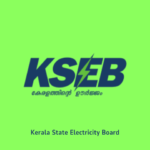The concept that we will discuss in this article is familiar to both clients who order their personal resources from trusted companies and studios and to people who work on its formation and subsequent implementation of the set goals and stages. The TOR (technical assignment) for website development is a certain form of a document without strict design rules, where the fundamental visual and operational aspects of the future website are presented. Among them, it is necessary to highlight those that are aimed at:
- Technology.
- Functional.
- Content- content.
The customer’s satisfaction with the final result depends on the step-by-step specification of the technical specification, a detailed, clear and precise description, and the contractor will fulfill the obligations undertaken accurately and within the set deadlines. Plus, this is an excellent moment for sustainable reputation growth.
Why is it needed, and what can you do without it?
This question often arises from clients who are applying for such a service for the first time and from certain craftsmen who are just starting to work in this area. The answer to it should be presented from two positions – directly from the customer and the contractor. So, it is advisable to make a technical task for the first group from the following positions:
- Opens up the opportunity to bring everything you want to bring to life.
- Allows you to create a highly detailed estimate in advance.
- It details how the site will look, what functional and content features it will include.
- Optimizes the process of clarifying basic questions and those that arise during work.
- Structures wishes and requirements in one document to simplify their further implementation.
At the same time, the technical specifications perform another important function – they allow you to see how the preliminary stages have been completed and, if necessary, make changes and additions directly to them.
For the performer, such a document opens up the following advantages:
- A clear, detailed and step-by-step understanding of the final goal and the paths that arise at the stage of its implementation.
- Acceleration of project development due to clearly defined stages, wishes and reduction of time for making adjustments when necessary and justified.
It should also be noted that the TOR is an insurance against the implementation of previously uncoordinated tasks; it is possible to potentially reduce to zero the possibility of claims. For example, when delivering a finished product, the client realized that he does not like the selected management system, and, therefore, he may want to redo it, but this is an extremely complex process, in fact, the project is done again from scratch.
To avoid such situations, the technical task is drawn up. It is also worth understanding that the TOR and the contract are two different documents: if the first is a step-by-step plan, clarification of all the details, then the contract specifies the terms, cost, force majeure circumstances, and the rights and obligations of each of the parties.
How to correctly draw up a technical specification for website development
You can take the path of least resistance and download the technical specifications, adding additional aspects that are important in your opinion. You need to understand: the owner of the future website does not necessarily need to understand all the nuances in detail (that is why he turns to you to solve problems). So that the customer can voice his wishes and clarify the details, at the initial stage of cooperation, he is offered to fill out a brief for the development of the site. This is a document where the client answers important questions regarding the future resource, describes how he sees it.
Then the specialists study, evaluate how realistic the tasks are, what stages are needed to achieve the goal and form the technical specifications themselves, which are also clarified with the client.
Traditionally, the brief specifies the following aspects:
- Type of order: landing page, small company website up to 8-10 pages, large-scale online hypermarket, corporate website, website with a user personal account.
- Is it necessary to additionally develop an application, and if so, for gadgets on which operating systems.
- It is planned to create a completely new product, or it is necessary to change, “pump up” an old resource, making it more convenient.
Often, the brief leaves the position “Other”, and the customer is asked to leave a comment on what he would like to see in the project.
Additionally, you can include references in the brief – links to sites that attract attention, for example, with their interface, functionality, or design.
Particular attention is paid to the structure. In it, the customer is asked to indicate which type, in his opinion, is most suitable. For example:
- Home.
- About Us.
- Delivery / payment.
- Product category – a separate product
Or, for example, what thematic blocks will be on the landing page – a one-page website: description of the offer, terms of communication/order, specific offers.
It is important to remember that when filling out the brief by the customer and, consequently, in the subsequent preparation of the technical specifications, the target audience, its needs, behavior, requests, priorities, in particular, when working with the site, are taken into account. This allows you to clearly think through the relevant structure, design, and additional functional capabilities in advance.
Examples of technical specifications for website creation
Typical examples of developing a technical task for creating a website are traditionally presented in the form of a table or a multi-tiered list. They include several sections, which we will introduce you to in more detail.
Organizational issues
The section specifies the timeframes for the delivery of the site. As a rule, they are average and there is a reserve of several weeks for final revision and adjustments. The timeframes directly depend on the type of site: a landing page is done much faster than a corporate resource. The type of work also affects the timeframes: individual or using a template.
This section also includes the following aspects:
- The volume of tasks and work, the complexity of their implementation. You can’t argue that a corporate resource with a couple of pages is faster and easier to make than an online store with support for technical nuances, for example, payment services.
- A detailed description of certain points concerning the management system, main sections of the site, content, design, domain name.
Site requirements
The second section of the technical specifications is directly related to the technical parameters that are a priority for the site. Thus, the contractor should describe the requirements for the following positions:
- Structure.
- Navigation.
- Design.
- Resource usage scenarios.
- Design, usability of the site.
- Implemented technologies, for example, payment through third-party payment services for the client, and for the business owner – connection to the accounting system.
This is a basic set of items in the TOR section, which can always be supplemented if necessary.
In some examples, in addition to the phased implementation, a completion date for the project may be added.
Engine
It is mandatory for the customer to indicate the preferred engine in the brief. If there is no idea which one would be better, then it is worth consulting with the company’s specialists. Among the most frequently used, the following are distinguished:
- Self-written.
- CMS, in particular Drupal, WordPress and OpenCart.
- SaaS platforms, namely Tilda and Wix.
- Framework.
When choosing a suitable engine as part of the technical task, the contractor needs to clarify several fundamental questions with the client:
- The content will be published independently or with the help of a specialist.
- Who is responsible for maintaining the resource: the client or the developer directly.
- Who will perform the functions of the administrator in the future: the webmaster or the person representing the client.
When you have a small business and do not have developers on staff, then a boxed CMS is exactly what you need. But SaaS varieties are more complex, they are used to create and further use limited varieties of sites.
Design
The difficulty is that in a written technical specification it is almost impossible to describe in words alone what general concept of color, shape, design should be chosen. Here it is worth using maximum specificity, and not subjectivity, therefore we recommend abandoning the words “recognizable”, “modern”, “branded”, and clearly spelling out the shades, concept, other effects used in the design, and also making a prototype of the site . If the customer company has a brand book, thanks to it you can start from the priority color, thematic concept.
In the technical specifications for creating a website, if the brand book is missing or is only in development, it is necessary to specify specific wishes, including the following:
- Which fonts do you want to be the main ones and which ones are secondary ones?
- Thematic direction, size and format (strict contours, streamlined lines) of photographs and illustrations.
- Basic and additional shades.
- Permitted and unacceptable combinations of shades and textures in design.
- Design of space and setting visual accents.
But it is better to avoid going into detail about light and shadow, figures, lines, and forms. This should be entrusted directly to designers and their compilation of narrowly focused technical specifications.
Main sections of the site
It is practical when, when voicing the requirements, the customer writes down what, in his opinion, the ideal structure of the site looks like. It is also important to clarify the characteristics of landing pages and for pages within sections of the site. It is also important to consider in advance what navigation methods will be used, but traditionally, in order not to make the site too “overcomplicated”, they use standard ones.
Below we will demonstrate useful tips that we have developed over time:
- Think of a clear and strict hierarchy of sections.
- Don’t overload the user with too many, complicated navigation paths.
- Avoid long links and replace them with simple ones.
- The link leading to the main page must be active from every other page of the site.
- All documents must have a unique URL.
It is recommended to describe this component of the technical specification for website development block by block so that the customer can quickly evaluate how his website will look and also understand whether it is convenient for him and how a potential client can work with it. Sometimes, the task is additionally formed in the form of a multi-tiered table or list.
Contents of pages and description of their elements
Here, an important task for the contractor is to prepare and present a layout of the landing and content pages, both the blog and the product cards. For ease of perception and quick clarification with the customer, use a graphic protocol in this section of the technical task together with the descriptive text, which significantly expands visual perception. It will conveniently show all the additional elements used and provided, including:
- cap;
- footer;
- sidebar;
- active buttons.
Filters are extremely important, necessary, in particular for sales projects.
Pay attention to the details in the description: the footer and header must be identical on all pages, they must stretch to the width of the screen or not. But it is better to offer a choice of fonts and font sizes.
Page generation
The developer will help in compiling this part of the technical specifications, who will draw up a checklist regarding page generation, but already taking into account the features of the site. Traditionally, filters are the most “capricious”. Specify in the paragraph which factors exactly form service pages.
Filters
It is these pages that are at risk due to overload, which is difficult to control. In addition, they are poorly indexed and react negatively to resetting the values selected earlier. To minimize problems, it is better to consult with specialists at the initial stage, and based on their recommendations, include a solution to the tasks in the TOR, which will help to avoid problems in the future.
Among the basic requirements that apply to filter pages, the following stand out:
- When creating URL filters, think carefully and follow the order, as errors and non-working parameters are inevitable.
- It is practical when you can independently set up the Title, Description, headings of levels from the first to the sixth level, keywords.
- In case of H1 level filter pages and intersection of more than two parameters, it is necessary to use only static links; mandatory and semantic URL.
- Proper interlinking and professionally configured indexing will have a practical impact on the number of visits and retention on the page.
Availability of content
In a competent technical specification for the development of a corporate website, as well as an online store, every word should be equally weighed, as well as a landing page. When drawing up a task in this aspect, you initially need to understand: the content will be provided by the customer and it only needs to be published, or this task falls on the shoulders of the performer. In the case of the latter, write down how clarification will be carried out before publication.
Another aspect is the indication of technical parameters of texts: water content, nausea, indicators for specialized services, for example, “Glavred”, the number and type of entered keys. Additionally, in this section of the TOR, requirements for photographs, videos, animation, infographics and other parts of the content are indicated.
Supported technologies
For a typical sample of the technical task, this position is mandatory. To make it convenient for specialists to work, it is better to draw up all the technical nuances for the future site as a separate list, so that later I can easily control the implementation of all points. For several years now, the following requirements have been the “support pillars” in this section of the technical task:
- Cross-browser layout.
- Adaptive template for mobile gadgets.
- The main content should load in no slower than 2.5 seconds or faster.
- The displacement indicator of elements does not exceed 0.1 points.
- The waiting period before the first interaction with the content is 100 milliseconds.
It is also important to perform the following operations:
- Optimize the basic, then secondary pages in the resource hierarchy.
- Check the correctness of the server response code.
- Implement semantic
- Set up robot exclusion standard in robots.txt file.
- Provide access via FTP.
- Create a sitemap in two varieties: custom and XML.
Additionally, the performer, taking into account the type of site, audience, position of competitors, can add other points to improve search results.
Domain name and domain zone
As a rule, the customer provides several varieties of name options so that the most successful one can be selected. In order for the task to be as detailed as possible for the contractor, it is advisable to create a checklist with requirements for the domain name. Among them are the following:
- A specific narrow topic.
- Use of selling words that relate to the product range.
- Possibility to insert company name.
- Using keywords.
- A specific domain zone.
Based on the wishes, the contractor provides a choice of options from which the client selects the appropriate one.
Hosting requirements
Not only the smooth operation of the site, but also its availability on the network directly depends on the hosting. When drawing up the technical specifications, we recommend specifying specific priority parameters:
- What technologies are important to support: protection from DDoS attacks, SSH access, backup capabilities.
- Is there a quick installation option for CMS?
- Indicators of planned load in the office and user traffic for 24 hours.
- Low disk quota.
- Suitable hosting type: virtual, servers, VPS.
- Is there a built-in file manager?
- Is it possible to transfer a website without financial investments?
Top 7 mistakes when preparing technical specifications
The trial and error method allowed us to form key errors in the technical specifications, which significantly slow down the process of its creation and can negatively affect the result obtained. We will dwell on the most popular seven positions below.
- There is no indication of target actions (for example, a call to an operator, a direct purchase, a reservation), this complicates analytics.
- Lack of information about the type of the site. The vision of whether it is a store or a corporate site should already be at the start of drawing up the technical specifications. At the same time, the customer can specify that he likes this or that site, but full-fledged copying will not lead to anything good.
- The lack of detailed, specific, written scenarios that are formed on the basis of the target audience and its needs. It is important not figuratively, but to accurately imagine who your clients are, with what desire or need they come to your resource.
- The nuances regarding counters for web analytics are not spelled out. At least the one presented by Google must be mandatory.
- There are no specific design specifications: colors, fonts, placement of blocks, but only general nuances of “beautiful”, “salable”, “modern”, “effective” are dictated.
- Semantic markup is not specified, which allows the search engine to better recognize content and helps it reach the top positions in search results.
- The requirements are rather vaguely formulated. Since the TOR is a document, it specifically and clearly states the wishes – “author’s template suitable for a toy store”, “adaptation of a specific symbol”, etc.
For the technical task, it is important to implement all aspects that you want to bring to life, starting from the type, continuing with the structure, usability, design, and ending with the content, corresponding to the theme and optimization of the pages.
Conclusion
Ordering a technical specification for website development from a top web design company is a smart and correct idea, since you can then directly entrust the practical part of its implementation to this company. Customer reviews point to the advantages of delegating the preparation of technical specifications to specialists:
- Prompt approach without loss of quality.
- Detailed compilation with insight into the essence of each aspect.
- Consultations if necessary, full detailed answers to questions that arise
- The contractors undertake creation for a new site, as well as an existing one with transfer and changes.
- Clear for the client with the possibility of further control at all stages.
A competent technical specification is a step towards a productive sales site with high traffic and search engine results!























